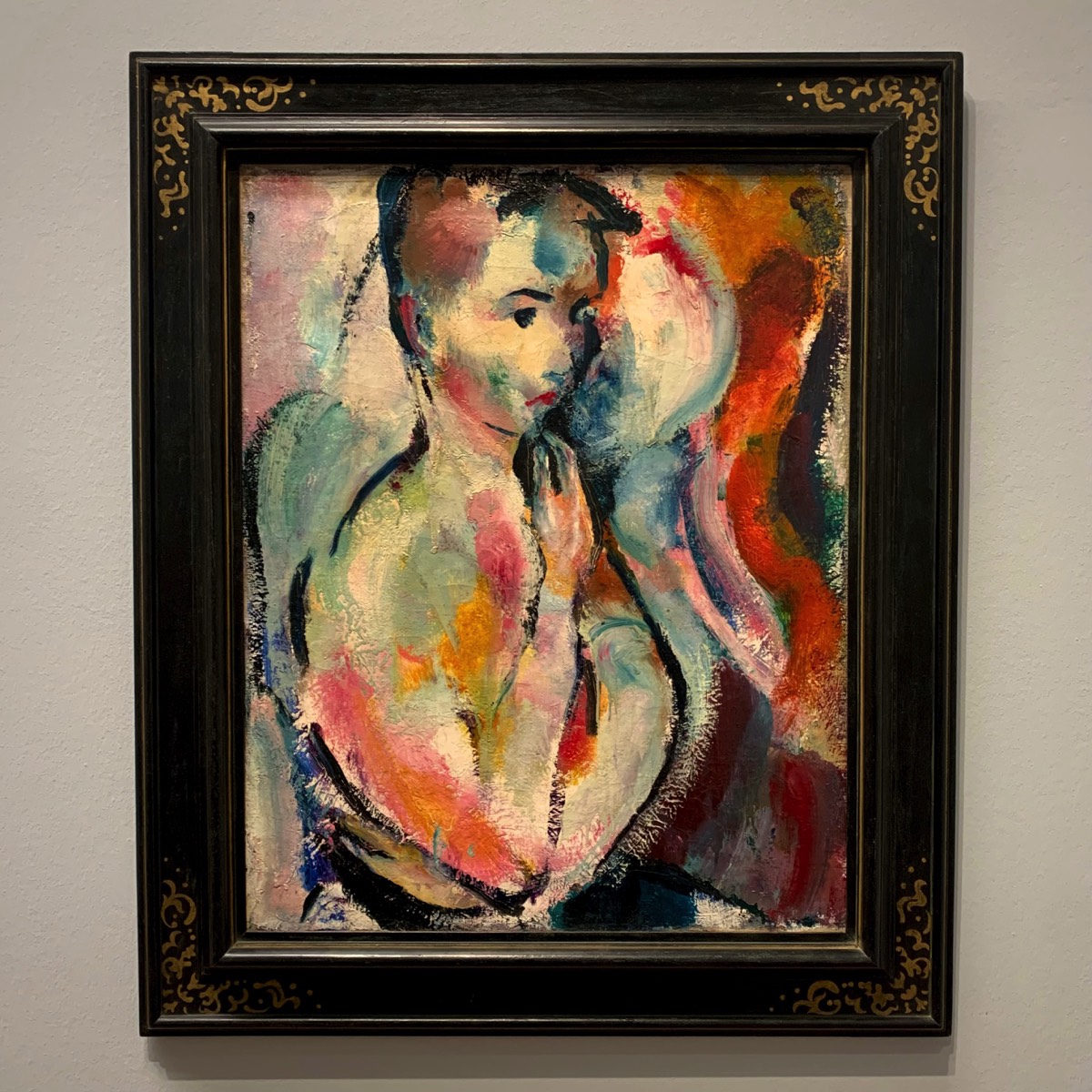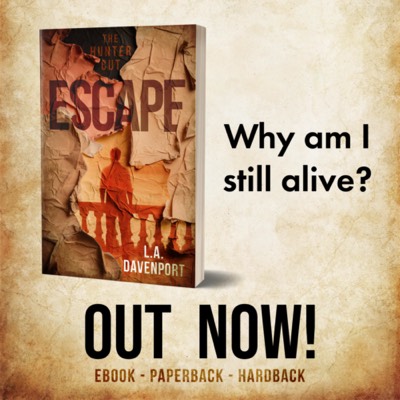Basq-ing in the glow of great art
Culture, 22 October 2022
by L.A. Davenport
Jean-Michel Basquiat is an artist I first came across consciously when I watched the biopic starring Jeffrey Wright. I thought it was a powerful film (with a remarkable performance from David Bowie as Andy Warhol), and terribly moving. But while I had a sense of his life story, I didn’t really get much of an idea about his art.
Over the years, I have often returned to the film in my mind, and wished that there would be an exhibition of his art somewhere, especially as I have still never made it to New York. So I was surprised to find when I arrived in Vienna late last week that there is a major show of his work currently on at the Albertina museum.
I am ashamed to admit that, despite having been to Vienna many times, I have never visited an art gallery there before. The problem, of course, is that I am always in that most art-full of cities for work, so my days are filled and I cannot normally do daytime activities. This time, however, I was determined not to let the opportunity to see Basquiat’s work slip through my fingers.
On my final morning, I decided that I had done enough work to warrant a bit of time off and, with nothing in my schedule until lunchtime, I slightly guiltily took the U-bahn over to Karlsplatz and enjoyed a sight that is rare for me when travelling: daylight. It was a lovely morning, and I took my time over my takeaway cup of tea to people watch from the foot of the escalator up to the museum entrance.
Once inside the rather sumptuous building of the Albertina, I noted that there were several other exhibitions on but headed straight for Basquiat, excited finally to get to see his work. I was not to be disappointed. Accompanied by some helpful explanatory texts, I could see for the first time the power and directness of his art. (I didn’t feel I could at all capture that with my camera phone, so I didn’t take any pictures of the works for this piece.)
It might be tempting raise an eyebrow at his apparently rather crude technique and the seemingly simplistic nature of some of the drawings, but that would be to miss the point. It is helpful to know that he was previously a graffiti artist, as that lends an energy and attitude towards the medium that sets him apart from other contemporary artists, and I think it is very important to understand the deep social commentary imbued in his work, and the very particular context within which he painted.
His works are often brutal, unidimensional, and anatomical (Gray’s Anatomy was a book he had carried with him since he was a child), but that fits perfectly the nature of the message he is trying to convey. Police brutality was a reality for him, and he was living in a society that was deeply racist, and deeply divided. New York was also a city on its knees, and the only appropriate reply in those sorts of times is to be confrontational. Much like the art created in response to the horrors of war, it needed to be crude and violent for it to match the crudeness and violence of the times.
One thing that struck me, aside from the works themselves, was the sheer number of groups of adolescent students that were being led round by guides. I don’t speak German, so I don’t know what they were imparting to their charges, but I thought it was entirely appropriate for young people to see Basquiat’s work. As well as the social commentary, his work is saying that you can take almost any material and mould it to express yourself, and to do so in the most direct and powerful way possible, all without feeling the needing to conform to expectations about constitutes a painting. For frustrated teenagers feeling misunderstood and growing up in a world of uncertainty, art is a wonderful means of finding one’s voice.
Over the years, I have often returned to the film in my mind, and wished that there would be an exhibition of his art somewhere, especially as I have still never made it to New York. So I was surprised to find when I arrived in Vienna late last week that there is a major show of his work currently on at the Albertina museum.
I am ashamed to admit that, despite having been to Vienna many times, I have never visited an art gallery there before. The problem, of course, is that I am always in that most art-full of cities for work, so my days are filled and I cannot normally do daytime activities. This time, however, I was determined not to let the opportunity to see Basquiat’s work slip through my fingers.
On my final morning, I decided that I had done enough work to warrant a bit of time off and, with nothing in my schedule until lunchtime, I slightly guiltily took the U-bahn over to Karlsplatz and enjoyed a sight that is rare for me when travelling: daylight. It was a lovely morning, and I took my time over my takeaway cup of tea to people watch from the foot of the escalator up to the museum entrance.
Once inside the rather sumptuous building of the Albertina, I noted that there were several other exhibitions on but headed straight for Basquiat, excited finally to get to see his work. I was not to be disappointed. Accompanied by some helpful explanatory texts, I could see for the first time the power and directness of his art. (I didn’t feel I could at all capture that with my camera phone, so I didn’t take any pictures of the works for this piece.)
It might be tempting raise an eyebrow at his apparently rather crude technique and the seemingly simplistic nature of some of the drawings, but that would be to miss the point. It is helpful to know that he was previously a graffiti artist, as that lends an energy and attitude towards the medium that sets him apart from other contemporary artists, and I think it is very important to understand the deep social commentary imbued in his work, and the very particular context within which he painted.
His works are often brutal, unidimensional, and anatomical (Gray’s Anatomy was a book he had carried with him since he was a child), but that fits perfectly the nature of the message he is trying to convey. Police brutality was a reality for him, and he was living in a society that was deeply racist, and deeply divided. New York was also a city on its knees, and the only appropriate reply in those sorts of times is to be confrontational. Much like the art created in response to the horrors of war, it needed to be crude and violent for it to match the crudeness and violence of the times.
One thing that struck me, aside from the works themselves, was the sheer number of groups of adolescent students that were being led round by guides. I don’t speak German, so I don’t know what they were imparting to their charges, but I thought it was entirely appropriate for young people to see Basquiat’s work. As well as the social commentary, his work is saying that you can take almost any material and mould it to express yourself, and to do so in the most direct and powerful way possible, all without feeling the needing to conform to expectations about constitutes a painting. For frustrated teenagers feeling misunderstood and growing up in a world of uncertainty, art is a wonderful means of finding one’s voice.
Talking of young people and arts, I realised I had a bit of spare time when I had finished the Basquiat, so I went to some of the other exhibitions on at the Albertina. Muntean/Rosenblum was a series of slightly fantastical paintings by two artists of teenagers, dressed or nude, invariably looking bored or vacant, often in mundane surroundings. They could have been good paintings, and sometimes approached having something to say, but the handling of light was so off that it made it hard to see them as anything other than a little bit amateurish.
There was nothing amateurish about the incredibly detailed and huge drawings by another duo: Hauenschild Ritter. They succeeded in that essential purpose of art, making us look differently at apparently familiar objects and scenes. They draw everyday scenarios in stunning detail, and although I don’t think I would want to spend much time with them, they were impressive.
Next was a collection donated to the museum by collector Herbert Batliner, a Liechtenstein lawyer who clearly had as deep pockets as he had good taste. The exhibition was entitled Monet to Picasso, but there were many, many interesting paintings in between, some by artists completely unknown to me (including the Herbert Boeckl at the top of this page). It filled in some gaps in my knowledge, and there were lovely examples of Miro and Giacometti, a wealth of pointillist paintings, and plenty of Picassos, among others. They reminded me that, although that great Spanish painter was capable of great art, not everything he produced was that great.
Sadly, I didn’t find much greatness either in the work of Francesco Clemente, which was my final stop on my tour of the Albertina. Some interesting ideas, and a vibrant palette, but it didn’t seem to add up to a lot.
There was nothing amateurish about the incredibly detailed and huge drawings by another duo: Hauenschild Ritter. They succeeded in that essential purpose of art, making us look differently at apparently familiar objects and scenes. They draw everyday scenarios in stunning detail, and although I don’t think I would want to spend much time with them, they were impressive.
Next was a collection donated to the museum by collector Herbert Batliner, a Liechtenstein lawyer who clearly had as deep pockets as he had good taste. The exhibition was entitled Monet to Picasso, but there were many, many interesting paintings in between, some by artists completely unknown to me (including the Herbert Boeckl at the top of this page). It filled in some gaps in my knowledge, and there were lovely examples of Miro and Giacometti, a wealth of pointillist paintings, and plenty of Picassos, among others. They reminded me that, although that great Spanish painter was capable of great art, not everything he produced was that great.
Sadly, I didn’t find much greatness either in the work of Francesco Clemente, which was my final stop on my tour of the Albertina. Some interesting ideas, and a vibrant palette, but it didn’t seem to add up to a lot.
- BASQUIAT. The Retrospective runs until 8 January, 2023.
- Monet to Picasso. The Batliner Collection is an ongoing exhibition.
- Francesco Clemente runs until 30 October, 2022.
- Hauenschild Ritter – Muntean/Rosenblum runs until 15 January, 2023.
© L.A. Davenport 2017-2024.
0 ratings
Note: Commissions may be earned from the links above.
Affiliate Disclosure
Affiliate Disclosure
Cookies are used to improve your experience on this site and to better understand the audience. Find out more here.
Basquiat | Pushing the Wave

